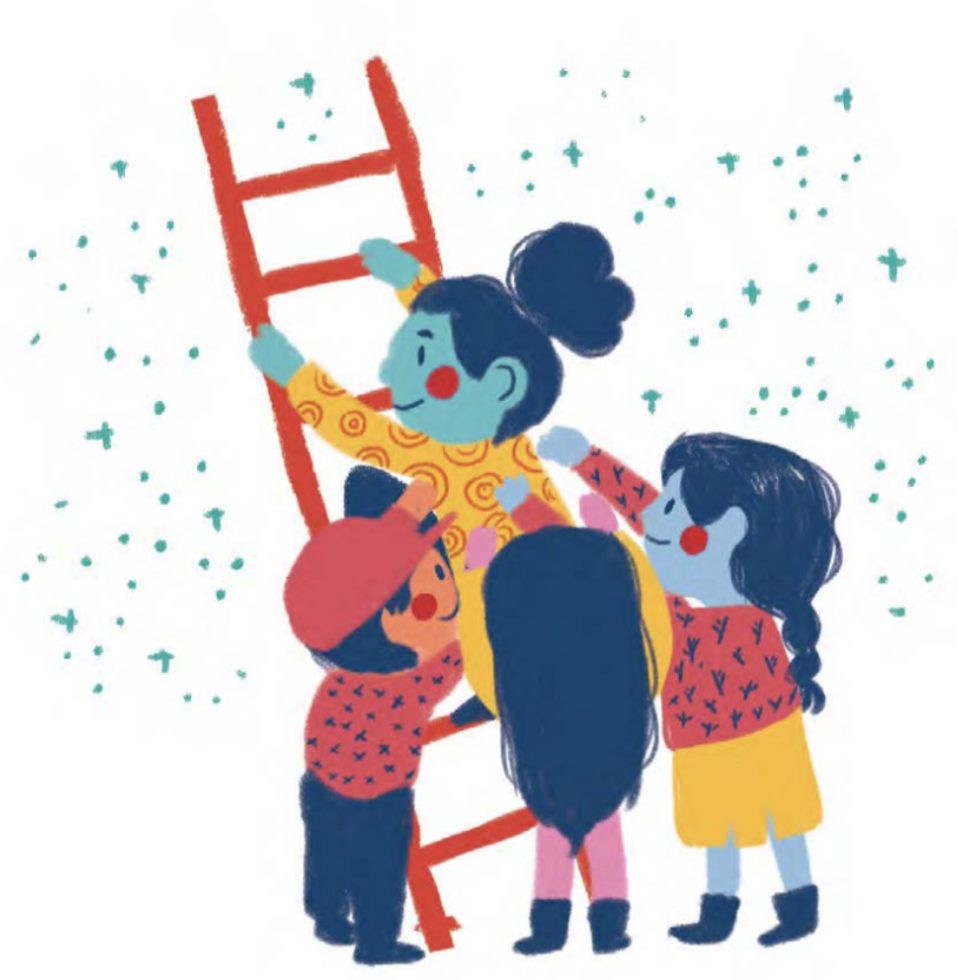 I want you to think about getting a grant as a game of snakes and ladders. There are ups and downs, and some of them can come as a surprise. But if you keep rolling the dice, you will eventually get to the end.
I want you to think about getting a grant as a game of snakes and ladders. There are ups and downs, and some of them can come as a surprise. But if you keep rolling the dice, you will eventually get to the end.
Does that mean I am promising guaranteed grant success? Not at all. What I am promising is that if you keep trying, you will arrive at the finish line. But the finish line is not — and should not be — receiving a grant. The finish line is completing your project. That’s the real goal, right? To write that book, draw that graphic novel, make that indie film?
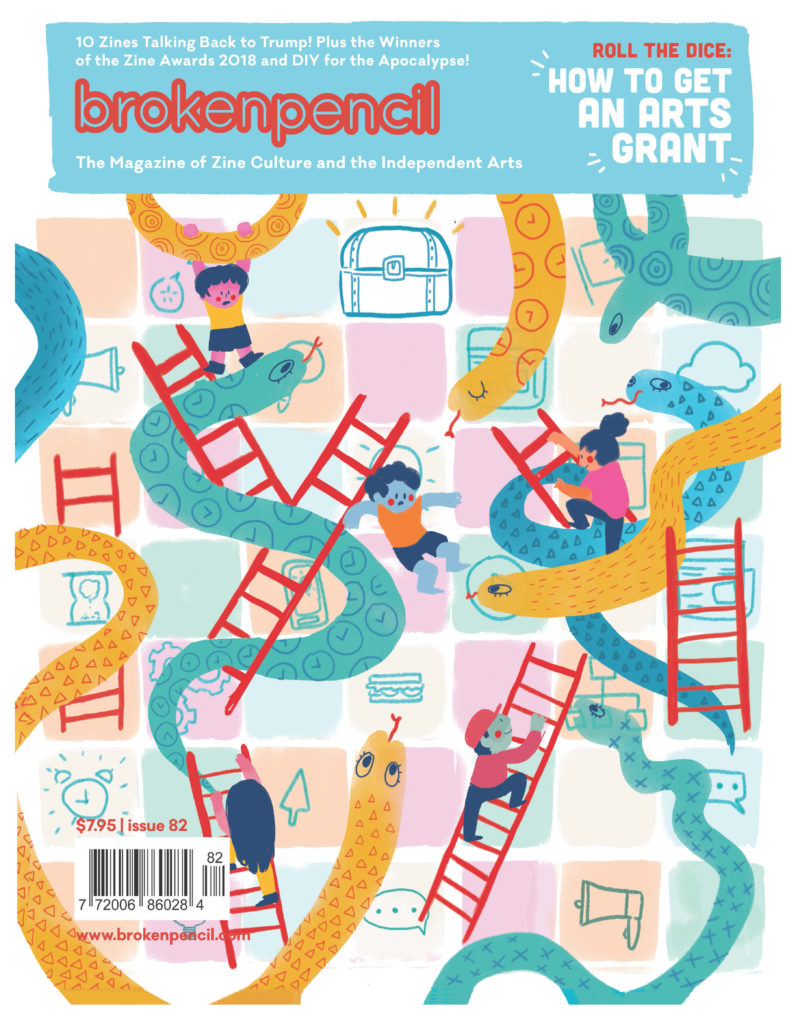
BUY THE WHOLE ISSUE FOR ONLY $5.95
Let me repeat that: the goal is not to get a grant. The grant is just part of the process that pushes you toward your real aim — completing your indie art endeavour.
That’s been my attitude over 20-plus years of applying for grants. I’ve applied for and received grants for magazine publishing and marketing, for running arts festivals, and for researching and writing fiction and nonfiction books. It hasn’t been easy, and it certainly didn’t make me rich, but it did allow me to pursue my artistic goals and, over the years, develop a kind of grant application philosophy: the grant is just part of the process, a means to an end. If I don’t get the grant, then I’ll keep rolling the dice, and I’ll still find some way to get to where I want to go.
So ask yourself this: Where do you want to go? If you want to go in the direction of bringing your project to fruition no matter what befalls you, then, yes, please read on. If you’re thinking it would be nice to get a grant so you can bank some easy money, show off to friends, and dabble in a side project, then I’d kindly suggest that the pain of a grant application won’t ultimately be worth the effort.
Finding grants
So where do you find grants, anyway? The answer is twofold: online, and where you live. In other words, all grants agencies are online, and there are lots of resources that list the grants available in your city, region, province, or country. Grants are usually given out based on your postal code. If you live in a city, that city will (sometimes) have a granting agency. The same goes for your province or state, and your country.
For example, because I live in Toronto, Ontario, Canada, I can apply to the Toronto Arts Council, the Ontario Arts Council and the Canada Council for the Arts — three levels of government. Lucky me!
If you live somewhere less urban, you might not have as many options. In the US, there tend to be fewer government-funded arms lengths arts councils and they tend to have fewer programs.
But there are other places to look for grants in the U.S. and, to a lesser extent, in Canada. These are usually called foundations, and they are generally funded by private citizens and sustained through donations.
The Guggenheim Foundation is the most well known of these grant-dispensing agencies. Based in the US, they are one of the few foundations that offer grants to both US and Canadian residents. But, as they warn, the competition is fierce: “The Foundation receives approximately 3,000 applications each year. Approximately 175 Fellowships are awarded each year.”
Are you eligible?
Okay, so you’ve searched for arts grants in [your city, province, country here]. Start assembling your list: What are you eligible for? In addition to looking at what grants are available for, say, a novel-in-progress, you also want to look carefully at who that grant is for. An arts grant is, essentially, money provided to an artist or organization to make art. But not all grants are the same, and one may define who they consider an artist completely differently than another.
“Hey, wait a minute,” you’re thinking. “Who said anything about being an artist? I’m not an artist, not yet!” You may feel that way, but everyone had to begin with that first project. If you’re just getting started, then most granting agencies are going to consider you an emerging artist. They might even have special grants just for emerging artists, so you aren’t competing with people who have honed their craft for decades. For instance, a granting body will have different categories for people who have not yet published, have a few pieces in a magazine or journal, or have published a great deal. Find your category and apply. You don’t have to be a bona fide artiste (whatever that is) to apply for a grant. But you do want to carefully read the fine print and make sure that you qualify — whatever your experience level.
If you have any questions about the grant and your eligibility or which category you fit into (for example, if I’m doing a book of drawings and poetry, should I apply as a visual artist or as a writer?), then you should contact the granting agency. Most grants will list the name of a person at the particular agency or foundation who you can reach out to via phone or email. Keep in mind that they usually don’t decide who gets the grant, they just organize it. You can ask them your questions without worrying that it will affect your chances. That said, do your homework first — you don’t want to ask them questions that are written in bold in the grant instructions. Make sure you’ve read through the material provided on the website first, paying particular attention to who is eligible, what the grant funds, and what is required in your application. Then ask your questions. The staffer would much rather you check in with them first then have you spend months on a grant that is going to be rejected on a technicality.
For instance, it would be a bummer if you applied for a grant for emerging creators ages 20-25, but turns out it’s only available to people who are not currently pursuing higher education, and you’re in your third year of university — whoops, how did you miss that?
Timing
This should be obvious, but it bears repeating. You want to give yourself enough time to get everything together. If you find out that the upcoming deadline is next week, that’s probably not going to be enough time to complete the application. Sorry. You will just have to wait until the next deadline, which may be in six months, a year or, in some rare cases, two years. It’s always better to wait and make sure you are putting your best work in, than to turn in something sloppy that will almost surely be rejected. Additionally, some grants will require you to register with their online portal and be pre-approved. You’ll want to do that at least a month before the deadline, in case it takes them a while to approve you and set up your account. If you can’t get approved on the portal before the grant’s deadline, then you are definitely working on too short a timeline. Wait for the next deadline to come around.
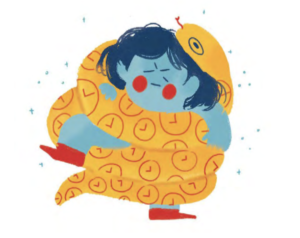
The artist’s statement — short and simple
The biggest mistake people make is with their artist’s statement. Most grants ask for one. Sometimes they want a few hundred words, sometimes they want a few thousand. You don’t have to fill the word count, and you don’t have to make it sound like you are graduate school-steeped in the postmodern theories of Derrida and Kristeva. As someone who has sat on several grant juries, I know from experience what the jury wants. Keep it simple!
An artist statement should answer two — and only two — questions. Question 1: What are you trying to do? Question 2: Why are you trying to do that?
For example, I’m writing and illustrating a graphic novel based on my time working as a barista. It’s about a period in my life when I had dropped out of school, ended a longish relationship, and stopped talking to my family. I’m trying to do this project because the story shows how easy it is for young people to become alienated and isolated, lost in a series of service jobs with precarious hours, disconnected from parents who grew up in a different country with very different values. I want to tell a story that’s about precarious labour, intergenerational strife and being a first generation Canadian; and I also want to tell a story that’s particular to me.
You see what I did there? I explained what I wanted to do, and then articulated how what I wanted to do might matter to more than just myself. Your project doesn’t have to grapple directly with social issues. You just need to articulate the reasons why the work is about something more than just yourself or how interesting or talented you are.
Here’s a tip: Make the artist statement 25% shorter than is required, and include zero artspeak jargon and use only four instances of the word “I.” Do that, and the jury might actually get to the end of your statement without their eyes glazing over.
Most grants are decided by a jury, which is an assemblage of other artists tasked with picking out the best projects. They just want to know what you’re actually trying to do, not how it relates to “agency” or Chomsky’s linguistic theory of poststructural capitalism. If your average friend in banking, fashion, or bartending can make it through your statement and pick up on the main points, then you’re probably going to be alright.
Writing an artist’s statement seems like a major slog, but it can also be very useful to your process, regardless of your application’s outcome. It forces you to do something you probably haven’t done yet: sit down and think rigorously about what you’re doing, why you’re doing it and who, ultimately, you are doing it for (other than yourself). At some point, every artist must answer these questions. Most people will keep pushing it down the road, claiming “the work should stand on its own!” or “I don’t need to explain myself!” Both of these statements are true, but think of it this way: the artist statement isn’t for the grant’s jury or the future audience of your work. It’s for you: a well thought-out roadmap to guide you on your way.
The sample or support material
The other major aspect of your grant application is the sample of your work, sometimes called “support material”. A granting agency isn’t just going to give you money based on a statement, they want to see the goods! So they’ll ask for something you’ve done already to read or look at, such as slides, scripts, or video clips. If you’re working on a manuscript of some kind, an application might ask for as few as 10 double-spaced pages or as many as 40.
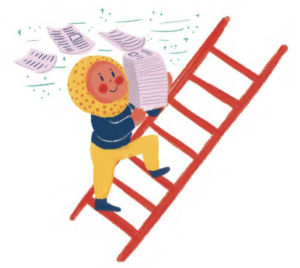
Some grant applications may give you the option of sending in work from a previous project. Unless the grant specifies that the project in question should not yet be underway, please don’t do this. It will seriously lessen your chances of getting the grant, not to mention make the whole process far less useful as a
motivating factor for getting you off your butt and into action. Most of the time, the jury wants to see what you’re currently working on. Anything else will confuse them. They may have as many as several hundred grants to read.
And, yeah, I know — that’s a lot of work! But remember what I said about using the grant application process to push your project along? If you’re not willing to dig in and make some headway on your project, then you’re probably not going to get a grant. The sample is a great test. If you can get the sample together, and you’re happy with it, then you’re probably ready to move ahead and make a concerted effort to complete a larger work.
The sample is what the jury really wants to see. A lot of jurors will skip directly to the sample without first reading the statement. The sample, after all, answers the jury’s most important question: Does the applicant have the chops?
Your sample should go right up to the required length. If you are asked for 15 pages, send in 15 pages. If you’re asked for 12 images, provide 12 images. You don’t want anyone thinking that you don’t have much to show! The sample is not a trailer, and it’s not about titillation. It’s about showing your skills, demonstrating that the project can be completed and is worthwhile. Give it all you’ve got! It’s the core of your application, so the passion and commitment has to come through, if you are to have any hope of success.
Pro tip: Make sure all your written work is free of typos and grammatical errors. Proofread it yourself, then get a friend or even a professional to go over it. Juries with a huge stack of applications are looking for reasons to reject you. Sloppy errors in otherwise strong samples are a great excuse to bury your application.
So what do they really want?
So, you’ve drafted a sample and an artist’s statement. You’ve filled out the paperwork online. You’re ready to submit. Is that it? Isn’t there something else? Some secret sauce, some little known recipe for success that I, master grant getter, can give you?
Well, that’s the billion dollar question. What do they actually want? There are two answers to this.
The first is that the grant agency doesn’t want anything. Their job is to fund the best projects that come through their door (aka their occasionally overcomplicated online portals). They are looking to put some dollars towards arts projects that seem likely to have an impact. So if you can show that you have what it takes, they might fund you, or they might choose someone else who has shown equal promise, all depending on the completely subjective decisions of the jury.
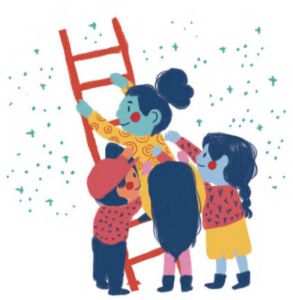
But the second answer is that, in some cases, granting agencies give unstated preference to certain kinds of applications or projects. Most grants agencies and foundations have some sort of agenda — which is to say, a set of values or a goal they want to fulfill that guides the kinds of grants they offer and who ultimately gets approved. An agenda isn’t necessarily a good or bad thing, but it’s important to acknowledge that granting agencies often have one.
Traditionally, the agenda behind the Canadian system of grant giving has been what we once might have called nation building — helping culture creators to tell stories (good or bad) about the country or the province or the city that ultimately pays the agency’s bills.
But in our fragmented age, things can be a bit more complicated. In addition to the overall goal of supporting local arts and culture creators to tell their stories, there are often different goals at play.
The agenda might be overt. For instance, the Access Copyright Grants Foundation “supports Canadian culture by providing grants intended to encourage the development and dissemination of publishable Canadian works.” The key word here is “publishable.” If you’re working on a manuscript that is far outside mainstream publishing and that could never be conventionally published — and I hope you are! — then the grants Access Copyright offers are probably not for you. It’s a clearly stated agenda, obvious to all parties.
Other agencies, particularly agencies that are directly part of the government, often have agendas of economic development. They will want you to talk about who the market will be, how many people will be employed in the making of the work, how many people might come from out of town to attend your planned event, so that at the end of the day, they can make an argument for economic stimulus.
Pro tip: Give them the information they want in the way they want it! If they want an economic argument for your project, don’t send them a treatise on the power of beauty. Send them a breakdown of how each dollar they invest in you is going to lead to five dollars generated for the economy (and leave out the part about the rising up of the downtrodden cultural workers of [insert your city, region, country here].) If you can’t make the argument, or don’t want to make the argument, then grants with this agenda aren’t for you.
Priority groups
Increasingly, grant agencies are also invested in achieving social goals through the arts. One way they do this is by supporting certain priority groups. In most cases, supporting these priority groups is meant to even the playing field for groups who have traditionally faced barriers because they belong to a particular race, disability, identity group, underserved region or economic bracket. Less frequently, you might run into a grant that privileges certain artistic themes or ideas such as multiculturalism, democratic engagement, or LGTBQ issues.
If you don’t identify yourself as a member of a specified group, then it’s simple: don’t use this as a part of your application, and don’t apply to grants aimed at those groups. If you do identify as a member of a prioritized group, then go for it. Remember that your goal is to complete your project. If announcing yourself as belonging to a priority group will push you forward, then by all means, do that.
Being a member of a priority group doesn’t require that you make art about your experiences as a member of that group. Even so, I think it’s helpful to think of policies to support artists from priority groups as a larger, often unstated sub-text for what a grants agency wants to accomplish overall with their money. Will some funders look more kindly at proposals with certain themes, perhaps those that overtly explore issues around race, class and community building? I think that may very well be the case, and that’s their prerogative.
So regardless of how you identify, the question now becomes: should you be trying to make work with themes that will better fit with a granting agency’s unstated set of goals or values? Is that the secret recipe for success? Well, as with so many things in the murky world of cultural funding, the answers are “it depends” and “proceed with caution.”
If you have elements in your work that echo themes that seem to particularly interest a granting agency or foundation, then I would definitely recommend that you emphasize those elements. Bring them to the forefront. Make sure they don’t get lost. You might do this by emphasizing certain themes and plot points in your artist’s statement, or by choosing sample work that really speaks to these themes.
On the other hand, do I recommend adding elements to your project to make it more aligned with the themes that a granting agency seems to want to encourage? Definitely not. Trying to add elements that you wouldn’t normally include in your art may compromise the strength of your work. It won’t be genuine, and juries and audiences will see right through it. You have to be you. You have to believe in your vision. If you don’t, who will?
The big wait
So you’re done. You applied for the grant. Remember, there are no take-backs. Once you’ve applied, you can’t change your sample or add something to your statement. It’s time to move on. Typically, you’ll hear back in about six months, but sometimes it can be eight or even 10 months. A rookie mistake is to sit around brooding about the grant result that entire time. Try to completely forget that you applied for the grant in the first place. How do you do this? There are a few things you can and should do.
First off, apply for other grants. Pro tip: Once you’ve applied for one, it’s a lot easier to apply for another for the same project — which, by the way, is a perfectly acceptable thing to do. In some cases, you might only have to make very small changes to the application, such as slimming down sample pages from 30 to 20. Better yet, you’ll find a grant that wants more sample work. Great, incentive to keep going with your project!
That’s the key. Don’t lose momentum. The grant got you started, so keep going. Make a schedule. Work on your project every day for an hour, for two hours, for three hours. Tell yourself that you want to be further along with the project when you get the results, whatever they are, than you were when you sent the grant in. Make that a measurable goal. If you need added incentive, how’s this? — if you don’t get the grant, then you’ll be in a better place to reapply because of all the hard work you’ve done.
And yes, you can and should reapply (check the fine print, some agencies limit you to a certain amount of applications during a calendar year). But if you aren’t successful, it’s best not to reapply to the same program with the exact same project. It’s true that there is an aspect of lottery-like luck in grant applications, but there’s also the fact that a jury already considered your application and didn’t fund it. Will another jury — similarly selected and instructed — come up with a different decision? Probably not.
So, keep working while you’re waiting. If you are rejected, you will have a more fleshed out project to apply with. If you’re accepted, then you head into your funded time period with momentum. Good for you.
Batten down the hatches, turn off your phone, unplug the internet and get to work!
Hal Niedzviecki is the founder and publisher of Broken Pencil Magazine. He’s the author of many works of fiction and nonfiction including, most recently, Trees On Mars: Our Obsession with the Future (Seven Stories Press) and the novel The Archaeologists (ARP Books).

